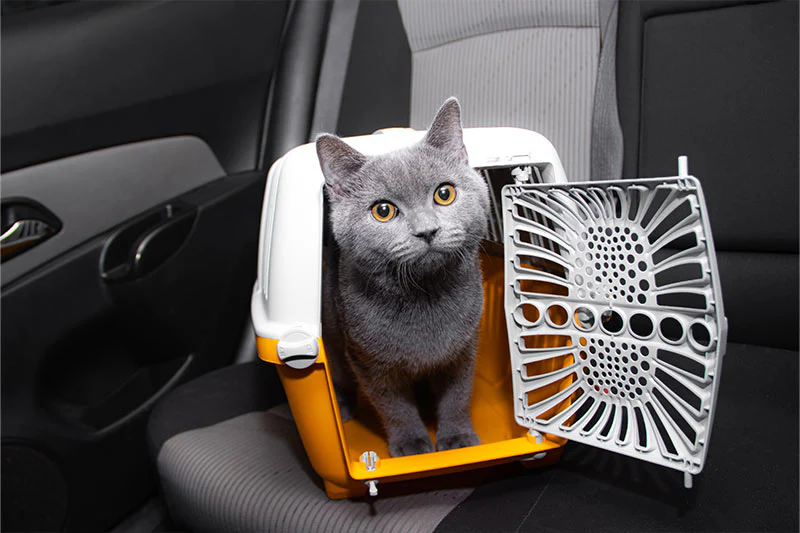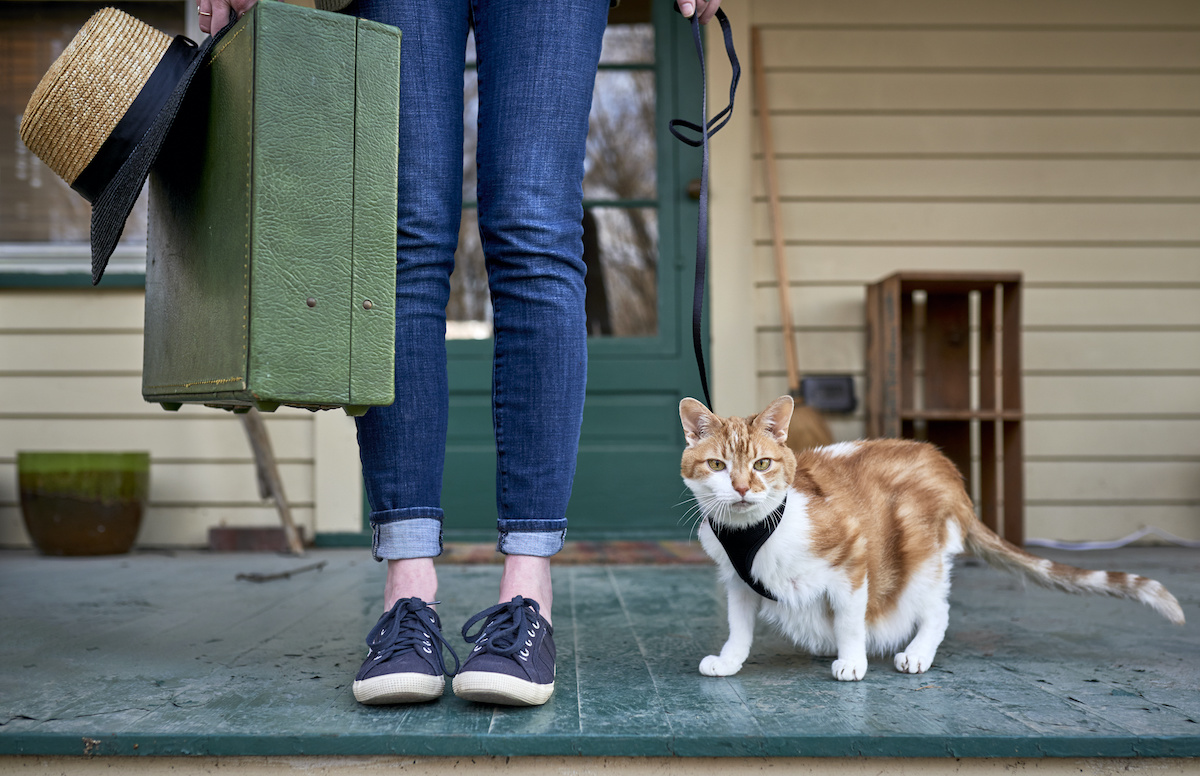Traveling with an anxious cat can be challenging, especially for pet owners who want to ensure their cat’s well-being. Whether you’re moving long-distance or just going on a short trip, there are many factors to consider. Here’s a comprehensive guide to help you decide if you should travel with your anxious cat and how to make the journey smoother if you do.
Understanding Cat Anxiety
Anxiety in cats can manifest in various ways, especially when routines and familiar environments change. Before deciding to travel with your cat, it’s essential to understand the common signs of anxiety and assess your cat’s specific needs.
Signs of Anxiety in Cats
- Excessive Meowing or Vocalization: Cats often meow more when they’re stressed or anxious.
- Changes in Eating Habits: Anxiety may lead to a lack of appetite or refusal to drink.
- Aggression: Some anxious cats may show signs of aggression, even toward familiar people.
- Body Language: Signs like a crouched posture, flattened ears, or wide eyes can indicate stress.
Causes of Anxiety
Common stress triggers for cats include new environments, loud noises, and separation from their familiar surroundings. Cats are highly sensitive to routine changes, so even a minor shift can cause distress.
Should You Travel with Your Anxious Cat?
Not every cat is suited for travel, and some may experience significant stress. Before making your decision, here are a few things to consider.
Is Travel Necessary?
If you’re only planning a short trip, leaving your cat at home with a pet sitter might be more comfortable for them. Long-distance moves may make travel unavoidable, but consider your cat’s anxiety level and whether travel is in their best interest.
Consult Your Veterinarian
A vet can assess your cat’s health and provide guidance on whether travel is feasible. For some cats, veterinarians may recommend calming medications or supplements to reduce stress during the journey.
Alternative Care Options
Consider alternatives like a pet sitter, a trusted friend, or a boarding facility. These options may be more suitable for highly anxious cats, allowing them to remain in a familiar environment while you’re away.
Preparing Your Cat for Travel

If traveling with your cat is essential, preparing them well in advance can ease their anxiety. Here’s how to set up your cat for a smoother journey.
Choosing the Right Carrier
A comfortable, well-ventilated carrier can make a huge difference. Choose one that allows your cat to stand, turn, and lie down comfortably. Adding familiar items, like their blanket or favorite toy, can help make the carrier feel more like home.
Acclimating Your Cat to the Carrier
Introduce the carrier a few days before the trip. Place it in a familiar spot and encourage your cat to explore it at their own pace. Treats or a favorite toy inside the carrier can make it more inviting.
Maintain Regular Routines
Cats thrive on routine, so keeping their daily schedule as normal as possible can ease their stress. Try to feed and interact with your cat at the same times as usual, even while preparing for travel.
Tips for a Stress-Free Journey
The journey itself can be overwhelming for cats, but a few strategies can help keep your cat calm and comfortable.
Creating a Calm Environment
During travel, keep the environment quiet and avoid sudden movements. Playing soft music can provide a calming effect, and minimizing loud noises or sudden interactions will reduce stress.
Frequent Breaks and Hydration
If traveling by car, plan regular breaks so your cat can stretch, use the litter box, and hydrate. For longer trips, bring some of your cat’s favorite snacks, but avoid overfeeding to reduce the chance of motion sickness.
Monitor Your Cat’s Behavior
Pay attention to signs of increased anxiety, like excessive vocalization or scratching. If you notice heightened stress, consider finding a quiet area to take a break.
Alternatives to Traveling with an Anxious Cat
If travel doesn’t seem feasible for your cat, consider these alternatives to ensure they’re well cared for while you’re away.
Hiring a Professional Pet Sitter
A pet sitter can provide consistent care in a familiar environment, allowing your cat to stay in their routine without the added stress of travel.
Friends or Family Assistance
If you have friends or family who are familiar with your cat, leaving your cat in their care can be a comforting alternative. Familiar faces can reduce stress and provide a sense of security.
Cat Boarding Facilities
Boarding facilities with trained staff experienced in handling anxious cats can be a viable option. Look for reputable places with positive reviews to ensure your cat’s safety and comfort.
Conclusion: Making the Right Choice for Your Anxious Cat
Ultimately, deciding whether to travel with your anxious cat should be guided by their comfort and well-being. While some cats may adapt well with proper preparation, others might struggle with the change. By understanding your cat’s personality, behavior, and needs, you can make an informed decision. Remember, the goal is to ensure that your cat stays safe, comfortable, and healthy—whether you’re at home or on the road.
FAQs
Can I give my cat calming medication for travel?
Yes, consult your veterinarian for calming medications that may help ease your cat’s anxiety during travel. Never administer medications without professional guidance.
What are signs that my cat is too anxious to travel?
Severe signs like excessive hiding, aggression, or refusal to eat may indicate that your cat is too anxious to handle travel.
How can I keep my cat calm during a car trip?
Create a quiet, calm environment, play soft music, and take frequent breaks to allow your cat to stretch and stay hydrated.
